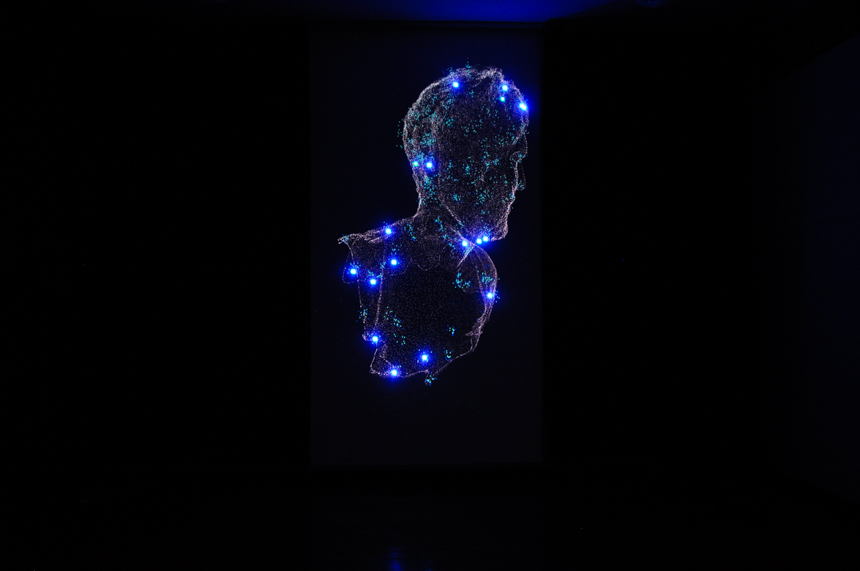Freud and Prothesengott
As Digi.logue becomes a multi-discipliner future teller in its new exhibition, it also asks the question “How will humankind exist and change in the future?” The exhition reinterprets the concept of future with a different perspective and subtext of technology. Comprising drawings, sculptures, coding, texts, movies and mixed media installations by 12 artists, the exhibition “Future Tellers” also displays Onur Sönmez’s work titled “Prothesengott” which reinterprets Freud’s “prosthetic God” as a prototype prosthetic hand with a reactive design. You’re invited to Digi.logue Space at Zorlu PSM between September 13 and October 30 to experience future scenarios through different disciplines. Meanwhile, let’s satisfy your curiosity a bit with Onur.

Onur Sönmez – Mandalay
Your career began in design but as you began to be curious about the interaction between humankind and machines. How did your curiosity begin?
It began when I was studying visual communication design in Istanbul. After graduation, I moved to Austria in 2007 to get my master’s degree in interface and interaction design. Currently, I work professionally on the relationship between humankind and machines. Prothesengott is a prototype developed with the approach of a reactive design – it’s a techno-culture project that can lead us to many places but I’m interested in creating new things on the relationship between mushroom-machine or machine-mushroom in which humans are only observers.
We live in a world where the relationship between humans and machines change constantly, but also where this relationship touches upon social, political, cultural, and even ethical values. What do you foresee in the future of this relationship?
Actually the boundaries between these two fields have never been clearly lined out. However, following the great transformation brought along by the Industrial Revolution and the integration of digital automation systems into nearly all aspects of life, these boundaries have become vaguer. Therefore, more scholars, designers and artists took an interest in these subjects. For instance, this project derives from a simple argument made by Freud on these issues. Our experiences, mistakes and lessons have shaped the human-technology relationship and they will continue to do so.
Prothesengott is the translation of the term “prosthetic gods” used by Freud for modern people nearly 50 years ago. How did you think of this subtext?
When Lalin contacted me about the Future Tellers exhibition, I began to think about a new project – mostly about how technologies, that affect our lives in a great scale, lack physical bodies.
I was talking to my friend Konrad on the phone about sensors that can perceive what human body cannot and how these sensors could become an extension of our bodies as tactile forms/faces. Then we talked about the philosophy of technology and the concept of Prothesengott. Later on, I collaborated with another friend, Mehmet Ekinci, to develop this project, to put together a manifesto and to lay a solid foundation.
You created “the prosthesis of a cybernetic organism that will be invented in the future” with microwave sensors and vibration motor. What kind of a thing is this cybernetic organism?
Prothesengott is in its first version now. It took four weeks to create it. It has a simple feature that humans don’t have. I don’t know how future cybernetic organisms will look like but I’m sure that it’ll bear traces of speculative projects and experiments developed by people working in this field.
The device you created has a hidden microwave receiver and this, without us knowing, detects the surrounding movements and starts to work. Doesn’t current technology also do that? Whether we’re aware of it or not, or even if we can physically detach ourselves from them, we’re actually in a relationship that spiritually continues.
We’re interacting with most of the current technology without being aware. This unconscious interaction is recorded by closed systems and stored somewhere as piles of data. Even when we decide not to interact with or use the system, that moment is still recorded by the system as an important interaction.
You define the prototype’s minimalist and open-end design as a pathway for future generations to dream of a time and space where they can change and resist technological systems. Resistance brings along the question “Is there a power play at hand?”
Resistance here means that the user, who reacts to the new technologies and their affects in many fields (daily life, political life, ecological life etc.), has a say and some amount of control, can hack/develop/transform these technologies, and take them out of their lives if necessary.
Are there scenarios that excite or scare you in terms of future technologies?
I don’t consider our relationship with future technologies in dichotomies such as good/bad or exciting/frightening.
Technologies are made – they interact with us and either become an extension of us by continuously changing or disappear. In his book “Civilization and Its Discontents” (where the concept of Prothesengott is mentioned), Freud says this amazing thing – that humans felt unhappy despite all this technological advancement and their godlike power to create (Gottähnlichkeit).
Are there any specific subject matters you’d like to work on in the near future?
I usually create my projects after I receive an invitation from an exhibition. It’s an excuse to create new projects in a new frame outside my daily 9-to-6 routine.
If I have the chance, I’d like to build a newer and more extensive version of Franz, a work I made for Contemporary Istanbul and that focuses on mushroom-machine relationship. We had some trouble with the logistics and timing.
A message for the future?
I don’t have a special one. I hope I can make more projects.
